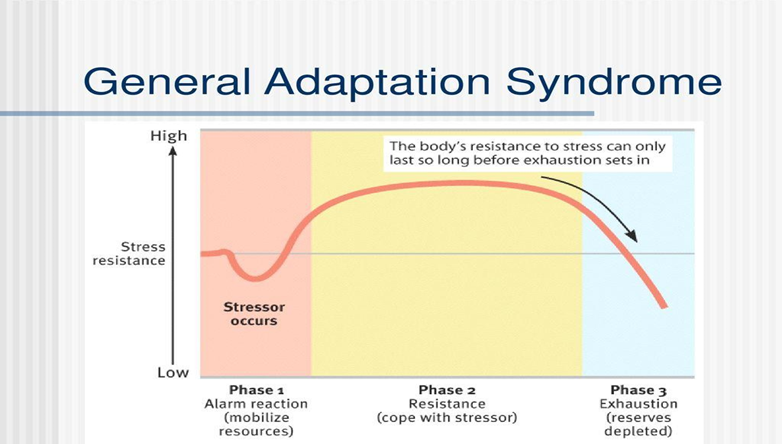Which of the following are physiologic manifestations which occur in the alarm stage of the General Adaptation Syndrome? (SELECT ALL THAT APPLY)
decreased blood glucose
Increased mental acuity
Increased urine retention
increased bronchial dilation
decreased pupil size
Correct Answer : B,C,D
B. Increased mental acuity, or heightened alertness and cognitive function, is a characteristic response during the alarm stage of GAS. The body's stress response enhances mental focus and perception to help the individual recognize and respond to the stressor effectively.
C. During the alarm stage of GAS, the sympathetic nervous system is activated, leading to the release of adrenaline (epinephrine) and norepinephrine. These hormones stimulate the kidneys to conserve water and sodium, leading to decreased urine output and increased urine retention. Therefore, increased urine retention is an expected physiologic manifestation in the alarm stage.
D. During the alarm stage, the sympathetic nervous system activation leads to bronchodilation, allowing for increased airflow to the lungs. This facilitates improved oxygenation of the blood and enhances the individual's ability to respond to the stressor by increasing oxygen delivery to tissues.
A. During the alarm stage of GAS, the body initiates the fight-or-flight response, which leads to the release of stress hormones such as cortisol and adrenaline. These hormones increase blood glucose levels through processes like glycogenolysis and gluconeogenesis to provide energy for the body to respond to the stressor. Therefore, decreased blood glucose is not an expected manifestation in the alarm stage.
E. Decreased pupil size: During the alarm stage of GAS, the sympathetic nervous system is activated, leading to the dilation of pupils (mydriasis). This allows for improved visual acuity and peripheral vision, enhancing the individual's ability to detect potential threats or stimuli in the environment.

Nursing Test Bank
Naxlex Comprehensive Predictor Exams
Related Questions
Correct Answer is D
Explanation
D. Consuming alcoholic beverages, especially close to bedtime, can disrupt sleep patterns and exacerbate insomnia. While alcohol may initially have a sedative effect and induce drowsiness, it can lead to fragmented and poor-quality sleep later in the night, resulting in worsened insomnia symptoms. Therefore, this statement indicates a need for further education by the nurse regarding the negative impact of alcohol consumption on sleep and the importance of avoiding alcohol before bedtime to improve sleep quality.
A. Keeping the bedroom cool (around 65 degrees Fahrenheit) is generally recommended for promoting sleep because a cooler temperature can help facilitate the body's natural temperature drop, which occurs during sleep onset.
B. Engaging in regular physical activity, such as taking a long walk during the day, can be beneficial for promoting better sleep. Physical activity during the day can help regulate the sleep-wake cycle, reduce stress, and improve overall sleep quality. Therefore, this statement reflects a positive sleep hygiene practice and does not indicate a need for further education.
C. This statement suggests an understanding of the importance of associating the bed with sleep and avoiding activities that may interfere with sleep, such as paying bills or working in bed. Maintaining the bed as a place primarily for sleep and intimacy can help condition the mind and body to associate the bed with relaxation and sleep.
Correct Answer is A
Explanation
A. One of the primary purposes of inserting an NG tube is to decompress the stomach by removing gastric contents. In the case of abdominal distention and severe vomiting, excess gas and fluid accumulation in the stomach can contribute to discomfort and further vomiting. The NG tube provides a way to suction out these contents, relieving pressure and reducing symptoms.
B. NG tubes can also be used to administer medications directly into the stomach. This route is particularly useful when a client is unable to take medications orally due to vomiting or other gastrointestinal issues. Medications can be crushed and dissolved in liquid form before being administered through the NG tube.
C. In some situations, such as when assessing for gastrointestinal bleeding or checking for tube placement, it may be necessary to determine the pH of gastric secretions. Gastric aspirate obtained through the NG tube can be tested for acidity, which can help confirm that the tube is correctly positioned in the stomach and provide information about the client's digestive function.
D. While NG tubes can be used to supply nutrients via tube feedings, this is not typically the primary rationale for their use in the acute situation described (abdominal distention and severe vomiting). However, in cases where a client is unable to tolerate oral intake due to their condition, tube feedings can be administered through the NG tube to provide essential nutrients and maintain nutritional status.
Whether you are a student looking to ace your exams or a practicing nurse seeking to enhance your expertise , our nursing education contents will empower you with the confidence and competence to make a difference in the lives of patients and become a respected leader in the healthcare field.
Visit Naxlex, invest in your future and unlock endless possibilities with our unparalleled nursing education contents today
Report Wrong Answer on the Current Question
Do you disagree with the answer? If yes, what is your expected answer? Explain.
Kindly be descriptive with the issue you are facing.
